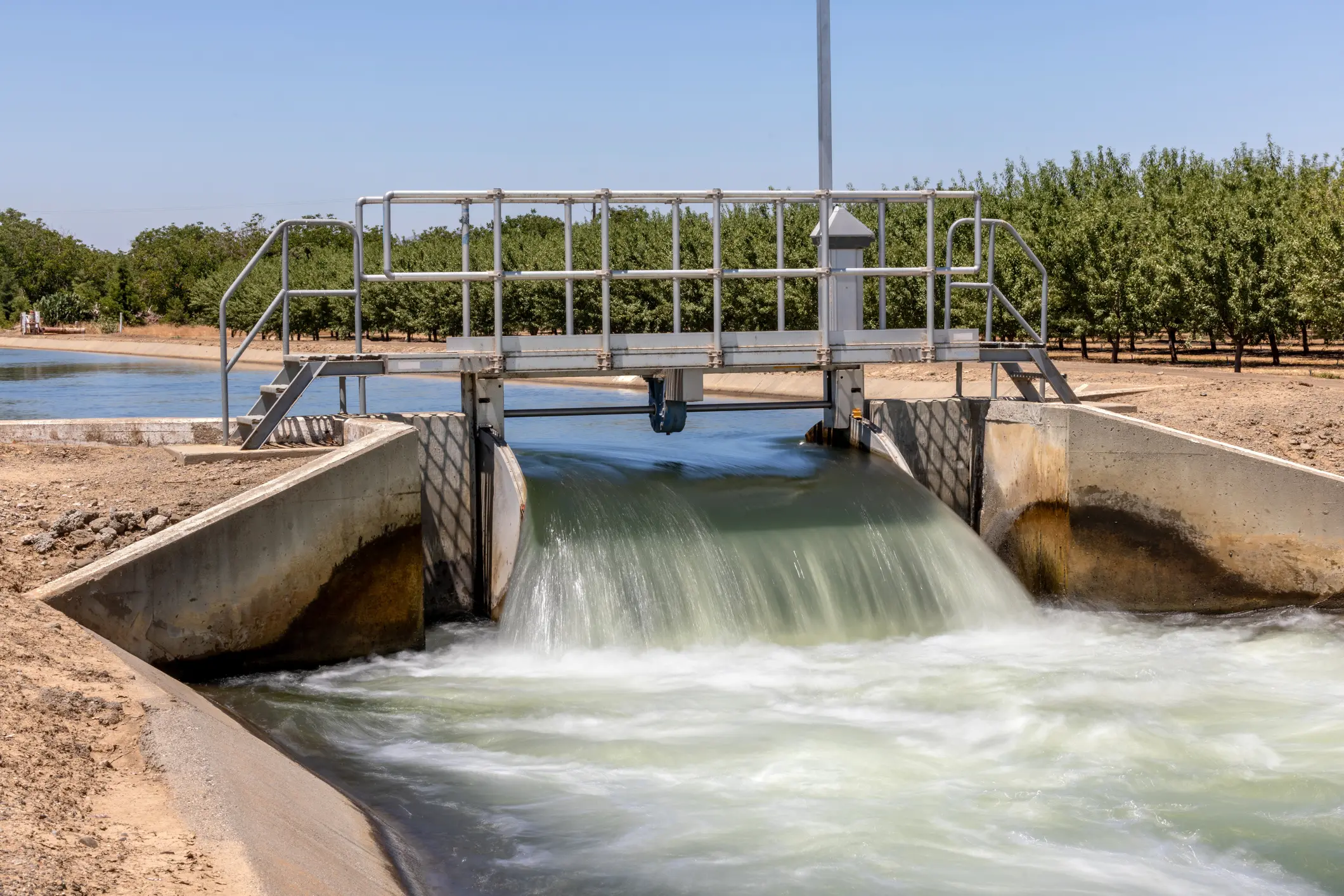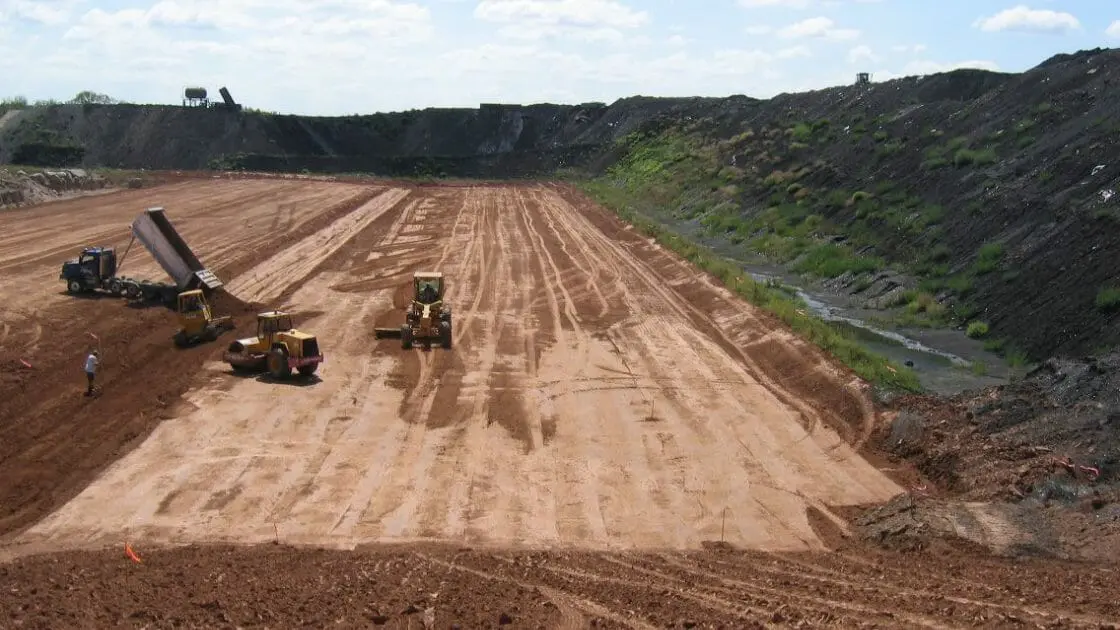After Confirming the EHS/ESG Management System is Developed and Implemented as Designed, What Can We Learn and Influence for Continual Improvement?
Once we have confirmed that the EHS/ESG management system is developed and implemented as designed, how do we evaluate and improve upon the EHS/ESG management system’s effectiveness to protect the organization against experiencing moderate to high EHS/ESG risks? Recognizing that these EHS/ESG risks can lead to a significant and lasting negative impact upon the organization’s growth and prosperity, we must carefully monitor the system’s performance and take action for continual improvement. Specific attention needs to be focused on Management of Change (MOC) processes and the effectiveness of the controls to properly eliminate or significantly reduce and manage moderate and high EHS/ESG risks.
How Management Review Findings and Observations Can Correct Management System Structure Flaws and Implementation Challenges
It is critical to have a reliable “feedback loop” that informs you on the health and effectiveness of an implemented EHS/ESG management system. Required of any legitimate management system, periodic management reviews (i.e., at least annually) provide insight into the ability of the management system to control moderate to high EHS/ESG risks. Closely examining the findings and associated EHS/ESG risks of such a review will offer perspective regarding how the system is working.
For example, if the management review uncovers missed or lack of training for certain employees belonging to a specific job function or department with moderate to high EHS/ESG risks, is there a correlated increase in incidents around controlled processes that these employees haven’t been adequately trained to perform correctly to manage the associated risks? Or are there observations that Management of Change (MOC) events, critical mechanical integrity inspections and preventive maintenance activities have not been consistently performed and could lead to an EHS/ESG incident?
Performing this evaluation can provide the forensics necessary to see how these activities and outcomes are related. This presents the opportunity to prevent them from occurring and/or manage them effectively if they do occur. Once aware of these correlations, the importance of training, preventive maintenance events, etc. are heightened to leadership and applicable employees to ensure they are performed when they are required, especially if new employees are part of these significant risk activities or operation and maintenance of the related equipment. Much insight can be gained from a careful and critical review of findings and observations from a well-performed management review.
We can also look for any patterns in the findings and observations that may point to an elevated risk – whether previously identified or not yet discovered. Is there a higher frequency of findings associated with specific process areas, specific equipment, specific employee functions and/or individuals? These types of observations may reveal EHS/ESG cultural challenges that are not always noticeable or observed during a management review. Addressing EHS/ESG cultural issues are more challenging than the typical regulatory compliance or management system conformance missteps. EHS/ESG cultural reviews need to examine the employees’ interests, motivations and behaviors to engage within the organization – specifically on EHS/ESG risks and needs.
From our perspective, organizations that demonstrate routinely that they value their employees and engage them in EHS/ESG decision-making and program development tend to have the best workplace environments and outcomes to protect fellow employees, the community and the environment. Employees respond well when they are engaged in the processes to protect themselves, their coworkers and the community.
Just like the discipline needed to address critical process safety conformance and compliance standard findings, management reviews should also deploy a comprehensive root cause methodology to fully understand the causes and influences that lead to noncompliance, nonconformance and/or moderate to high EHS risk incidents occurring. Carefully evaluating the outcomes of a well-planned and executed management reviews can bring tremendous value to your EHS/ESG management system in the spirit of continual improvement.

Evaluating Performance Using Data and Information to Achieve KPIs
In the last 10 years, it has become standard practice to establish key performance indicators (KPIs) for an organization to demonstrate and achieve progress within their EHS/ESG programs. KPIs may be external and shared with various stakeholders and/or they may be internal to help the organization focus of its important EHS/ESG goals. Typical examples of EHS/ESG KPIs includes:
- Reduce total case incident rate
- Reduce “near misses” count or rate (year-over-year)
- Reduction in greenhouse gas emissions rate (year-over-year)
- Increase the use of renewable energy sources
- Increase employee engagement with EHS/ESG activities (culture improvements)
- Increase inspections of internal EHS compliance requirements on key operations
- Pursuit to achieve management system recognition through a governing body
Learn More About Our Integrated Approach
This insights post is a follow up to our recent white paper Managing EHS & ESG Risks Through Integrated Systems. TRC offers integrated EHS services that help organizations better manage EHS and ESG associated risks and improve performance at the corporate and plant levels.

Organizations with established KPIs
Organizations with established KPIs need accurate, objective and reliable means to measure performance. Typically, the measurement and reporting of KPIs relies upon the Information Management System (IMS) that has been implemented to support the EHS/ESG management system and/or related programs.
It is important to initially and then periodically evaluate whether the information used to report the KPIs was properly established, objective, continuous or segmented and accurate. Understanding how all data and information that is gathered and used to report on the progress of each KPI and how they are measured will determine the confidence, dependability (reliance) and accuracy (appropriateness) of the information. This condition is critical in measuring EHS/ESG KPIs to inform the organization in whether it is making true progress or mislead by inaccurate information.
For each KPI, identify how the IMS was established to access information, which information/data, automated or manual entry, how that information is shared for inclusion and reporting and whether the information is monitored frequent enough to prevent noncompliance outcomes or EHS/ESG-related releases or incidents. Investigate how information that may become “unavailable” (i.e., during equipment shutdowns, startups or malfunctions) throughout the year is used or manipulated for use to accurately report on a specific KPI.
Through this investigation, you may discover that KPI outcomes are misleading or inaccurate, and that further rigor is needed to increase the accuracy of the data and information, especially for higher EHS/ESG risks. Creating a transparent process and procedure regarding how KPIs are measured (source of the information relied upon for the KPI) will provide the best outcomes for the organization. Critical to the success of any effective EHS/ESG management system is the timeliness and accuracy of the information and data used to make critical decisions and monitor performance of the EHS/ESG management system with confidence.
Embrassez le changement
Collaborez avec les praticiens testés de TRC
Partager nos perspectives
Nos praticiens partagent leurs idées et leurs points de vue sur les tendances et les défis qui façonnent le marché.

OSHA’s Call for Comments on Mechanical Power Press Standard Changes
septembre 30, 2021
OSHA has recently published a call for comment regarding mechanical power presses. The reason behind OSHA’s request is that the American National Standards Institute (ANSI) consensus standard for mechanical power presses has been updated numerous times since the implementation of OSHA’s standard.

OSHA Returns to In-Person Inspections As COVID-19 Restrictions Lift
août 4, 2021
The Occupational Safety and Health Administration (OSHA) is authorized by the Occupational Safety and Health Act of 1970 (OSH Act) to assure employers provide safe and healthful work conditions free of recognized hazards and by setting and enforcing standards and providing training, outreach, education and technical assistance. OSHA has recently announced the return to in-person inspections as COVID-19 restrictions begin to lift.

Managing EHS & ESG Risks Through Integrated Systems Today and Beyond
juillet 22, 2021
It has been more than 50 years since the development and establishment of the federal Environmental Protection Agency (EPA) and the federal Occupational Safety & Health Administration (OSHA) which were formed to protect our environment and workplaces across the United States. Significant laws, policies and regulations followed to establish the “regulatory programs” that all applicable businesses and entities must address and meet to ensure these compliance-driven legislative programs would create a foundation to protect our society.

Fostering an Enjoyable and Resilient Project Management Career
mars 10, 2025
In his final contribution to EM Magazine, TRC’s David Elam shares his thoughts on the health, well-being and success of project managers everywhere. These takeaways go beyond skills and habits in the workplace, and explore how project managers can align their lives outside of work with their professional goals.

OSHA Addresses Arc Flash Hazards and Electrical Safety in the Workplace
mars 5, 2025
OSHA releases guidance document on “Addressing Arc Flash Hazards in a Safety and Health Program” and the alignment with NFPA 70E standard for Electrical Safety in the Workplace. The Occupational Safety and Health Administration (OSHA) recently published a guidance document that aligns with the National Fire Protection Association (NFPA) 70E standard for Electrical Safety in the Workplace. The guidance document outlines how to use a management system to protect workers from arc flash hazards by focusing on worker participation, hazard identification, evaluation and control methods.

TRC Companies annonce vijay Gudivaka en tant que président de l’environnement et de l’infrastructure
janvier 30, 2024
La CVR a nommé Vijay Gudivaka président de ses groupes environnementaux (environnement, santé, sécurité et durabilité) et d’infrastructure

The Art of Industrial Hygiene Communication
juin 21, 2023
Understanding your own personal communication style and being aware of key best practices can help industrial hygiene professionals achieve better outcomes for their clients and advance their career development.

Changes to EPA’s Risk Management Program (RMP) Regulations Are Coming
avril 14, 2023
Changes to the Risk Management Program (RMP) regulations were signed into a final rule on February 27, 2024, by EPA Administrator Michael S. Regan.

EPA Finds Trichloroethylene Presents Unreasonable Risk in Final Risk Evaluation
avril 6, 2023
On Jan 9, 2023, the United States Environmental Protection Agency (EPA) revised the Toxic Substance Control Act (TSCA) to reflect a new risk determination for trichloroethylene (TCE).

Routinely Evaluating the Health & Effectiveness of Integrated Systems to Manage EHS/ESG Risks – Part 2
mars 15, 2023
Systematic monitoring and continuous improvement is important to achieve an effective EHS/ESG management system within an organization.

Recognizing, Identifying, Prioritizing and Addressing EHS & ESG Risks
mars 3, 2023
A clear view and understanding of the environmental, health and safety (EHS) risks created by a business is paramount to its success and longevity.

Routinely Evaluating the Health & Effectiveness of Integrated Systems to Manage EHS/ESG Risks – Part I
mars 1, 2023
Once established, an EHS/ESG management system must be routinely evaluated to ensure it remains effective to identify and control risks, as well as accommodate and adjust for changes that occur to/within the organization.

QA and Chemistry Services
février 23, 2023
TRC offers many QA and Chemistry services including data usability assessments, limited and full data validation reports, quality assurance project plan preparation, selection of appropriate analytical methodologies and laboratory audits.

PFAS Fate and Transport: Conceptual Site Models
février 23, 2023
The conceptual site model describes site-specific sources, release and transport mechanisms, exposure media, exposure points, exposure pathways and routes and potential human and/or ecological receptor populations.

PFAS: Data Collection and Analysis Part 2
février 23, 2023
There are many PFAS-related challenges, such as changing regulations, toxicology, fate and transport, analytical methods, remediation, public perception and more.

PFAS: Sampling and Analysis Part 1
février 23, 2023
Sampling and analysis of Per- and poly-fluoroalkyl substances (PFAS) requires specific techniques and analytical tools to ensure data quality.

EPA Publishes Effluent Guidelines Program Plan 15
février 14, 2023
The EPA announced updated effluent limitations guidelines under Plan 15, focusing on the evaluation and rulemaking process for per- and polyfluoroalkyl substances (PFAS) discharges.

PFAS: Remedial Approaches
février 8, 2023
Remediating Per- and poly-fluoroalkyl substances (PFAS) from the soil and water requires effective techniques and innovative technologies. TRC’s experts are well versed in several remediation strategies intended to remove PFAS and prevent re-exposure.

PFAS in Air: The Basics
février 8, 2023
Per- and poly-fluoroalkyl substances (PFAS) are a group of synthetic chemicals resistant to heat, water and oil. PFAS are widely detected in air as well as water and soil.

Green and Sustainable Remediation
janvier 9, 2023
Green and sustainable remediation (GSR) can optimize remedial activities, minimize environmental footprints and reduce social and economic impacts.

Emerging Contaminants- Microplastics, HABs and Cannabis
janvier 9, 2023
Microplastics, harmful algal blooms (HABs) and cannabis/hemp can present health and safety concerns.

Chlorinated Solvents 101
janvier 9, 2023
Chlorinated solvents are present in industrial chemicals and can post risks to the environment and human health.

PFAS: The Basics
Décembre 14, 2022
Per- and poly-fluoroalkyl substances (PFAS) are a group of synthetic chemicals resistant to heat, water and oil. These persistent chemicals have been found to be ubiquitous toxins in our environment.

Petroleum Hydrocarbons 101
Décembre 14, 2022
This presentation defines petroleum hydrocarbons and covers the range of products and constituents that comprise petroleum hydrocarbons.

Advanced NAPL Site Characterization Tools
Décembre 14, 2022
Advanced NAPL site characterization tools can improve site understanding and remediation performance.

Proactive Enforcement is Key in the EPA FY2022-2026 Strategy
octobre 19, 2022
A core element of the EPA FY2022-2026 Strategic Plan focuses on environmental compliance.

TRC Ranked No. 21 on Environmental Analyst’s Top 100 Environmental & Sustainability Consultancy Firms
septembre 20, 2022
RC Ranked No. 21 on Environmental Analyst’s Top 100 Environmental & Sustainability Consultancy Firms

Indoor Air Quality in the Workplace
septembre 1, 2022
Building occupants could develop breathing problems, cancer, skin issues, headaches, airborne infections and other health concerns.

Preventing IAQ Issues Before They Start
septembre 1, 2022
Fixing problems before they worsen saves your building money and enhances safety. The same is true for indoor air quality. Learn more.

Optimizing EHS/ESG Information Management and Reporting Systems by Leveraging Innovative Digital Technology Solutions
août 10, 2022
A single, integrated enterprise wide EHS/ESG IMS can significantly improve performance and communicate progress towards organizational requirements and goals.

Regulatory Compliance Items to Consider as Part of Transactional Due Diligence
juillet 19, 2022
Performing a limited environmental regulatory review can identify potential deficiencies with the environmental management of an acquisition.

Integrating Sustainability, Digital Connectivity and Design Optimization in Wastewater Treatment Systems
juin 20, 2022
Some organizations rarely think about water and wastewater treatment, until there is a problem. American industry depends on the ability to treat wastewater discharges while complying with regulatory standards and addressing emerging contaminants. If wastewater treatment fails, our environment is negatively impacted, and companies are exposed to shutdowns, delays and fines.

ESG vs. CSR | Differences, Definitions & Implementation
juin 19, 2022
ESG and CSR both address the need for corporate social responsibility in businesses but in different ways. Click here to learn more about ESG vs. CSR!

Support an Integrated EHS/ESG Management System
juin 10, 2022
WINDSOR, Conn. – TRC Companies, a digitally powered and environmentally focused global professional services firm, has been named #21 by Environmental Analyst in the 2022 Top 100 Environmental & Sustainability Consultancy Firms. “As one of the top global providers of Climate Solutions, TRC is proud to be recognized as a leader in environmental and sustainability, areas that are critically important to our clients and communities we serve,” said Christopher P. Vincze, Chairman & CEO of TRC. “Sustainability is a fundamental principle that drives our business, and we embrace the trust our clients place in us as we tackle some of the pressing energy, environmental and infrastructure challenges the world faces… making the Earth a better place to live — community by community and project by project.”

ESG Environmental Criteria Explained
mai 6, 2022
ESG criteria involve many factors and moving parts. Learn about environmental ESG criteria and contact TRC to develop an effective ESG strategy!

TRC Companies Pledges to Achieve Net Zero GHG Emissions by 2040
avril 26, 2022
TRC Companies, a digitally powered and environmentally focused global professional services firm, announced its commitment to achieve Net Zero greenhouse gas (GHG) emissions across its full value chain by 2040, aligning with the most ambitious aim of the Paris Agreement to limit global temperature rises to 1.5 °C.

How to Use an Integrated Approach To Manage EHS and ESG Risks
avril 20, 2022
WINDSOR, Conn. – TRC Companies, a digitally powered and environmentally focused global professional services firm, has been named #21 by Environmental Analyst in the 2022 Top 100 Environmental & Sustainability Consultancy Firms. “As one of the top global providers of Climate Solutions, TRC is proud to be recognized as a leader in environmental and sustainability, areas that are critically important to our clients and communities we serve,” said Christopher P. Vincze, Chairman & CEO of TRC. “Sustainability is a fundamental principle that drives our business, and we embrace the trust our clients place in us as we tackle some of the pressing energy, environmental and infrastructure challenges the world faces… making the Earth a better place to live — community by community and project by project.”

SEC Releases New Proposed Rules Requiring Public Companies to Disclose Climate Risks
avril 12, 2022
On March 21, 2022, the U.S. Securities and Exchange Commission (SEC) issued its proposed rules for The Enhancement and Standardization of Climate-Related Disclosures for Investors which would require public companies in the U.S. to disclose information in their annual financial reports.

EPA Issues Information Collection Request for Plywood and Composite Wood Products Source Operators
mars 17, 2022
EPA issued an Information Collection Request (ICR) to develop new emission standards for inclusion in the Plywood and Composite Wood Products (PCWP) National Emissions Standards for Hazardous Air Pollutants (NESHAP).

EPA Lifts Stay of Standards for New Lean Premix and Diffusion Flame Gas-fired Combustion Turbines
mars 14, 2022
The EPA Administration signed a notice to finalize amendments to the National Emission Standards for Hazardous Air Pollutants (NESHAP) for Stationary Combustion Turbines

PFOA & PFOS As CERCLA Hazardous Substances: What Does This Mean and How Can You Be Prepared?
février 17, 2022
A plan to designate two per- and polyfluoroalkyl substances (PFAS) as “hazardous substances” under CERCLA was recently submitted by the EPA.

OSHA’s National Emphasis Program on Heat-Related Illness and Injuries
novembre 3, 2021
On September 20, 2021 in an OSHA National News Release, OSHA published a memorandum establishing an enforcement initiative that is designed to prevent and protect employees from heat-related illnesses and death. This initiative, which develops a National Emphasis Program (NEP) on heat inspections, is an expansion of an already existing Regional Emphasis Program (REP) in OSHA’s Region VI, which covers Arkansas, Louisiana, New Mexico, Oklahoma and Texas.

NJDEP Implements New Jersey Environmental Justice Law Through Administrative Order
octobre 5, 2021
On September 22, 2021, the New Jersey Department of Environmental Protection (NJDEP) Commissioner announced the issuance of Administrative Order (AO) No. 2021-25 to implement New Jersey’s Environmental Justice (EJ) Law. This order is effective immediately, and applicants seeking to site new major source facilities, renew major source permits or expand existing facilities with major source permits (e.g., Title V air permits) in overburdened communities are affected. There are more than 4.5 million people that live within 331 municipalities that are overburdened communities in the state of New Jersey.

OSHA’s Call for Comments on Mechanical Power Press Standard Changes
septembre 30, 2021
OSHA has recently published a call for comment regarding mechanical power presses. The reason behind OSHA’s request is that the American National Standards Institute (ANSI) consensus standard for mechanical power presses has been updated numerous times since the implementation of OSHA’s standard.

OSHA Returns to In-Person Inspections As COVID-19 Restrictions Lift
août 4, 2021
The Occupational Safety and Health Administration (OSHA) is authorized by the Occupational Safety and Health Act of 1970 (OSH Act) to assure employers provide safe and healthful work conditions free of recognized hazards and by setting and enforcing standards and providing training, outreach, education and technical assistance. OSHA has recently announced the return to in-person inspections as COVID-19 restrictions begin to lift.

Managing EHS & ESG Risks Through Integrated Systems Today and Beyond
juillet 22, 2021
It has been more than 50 years since the development and establishment of the federal Environmental Protection Agency (EPA) and the federal Occupational Safety & Health Administration (OSHA) which were formed to protect our environment and workplaces across the United States. Significant laws, policies and regulations followed to establish the “regulatory programs” that all applicable businesses and entities must address and meet to ensure these compliance-driven legislative programs would create a foundation to protect our society.

Fostering an Enjoyable and Resilient Project Management Career
mars 10, 2025
In his final contribution to EM Magazine, TRC’s David Elam shares his thoughts on the health, well-being and success of project managers everywhere. These takeaways go beyond skills and habits in the workplace, and explore how project managers can align their lives outside of work with their professional goals.

OSHA Addresses Arc Flash Hazards and Electrical Safety in the Workplace
mars 5, 2025
OSHA releases guidance document on “Addressing Arc Flash Hazards in a Safety and Health Program” and the alignment with NFPA 70E standard for Electrical Safety in the Workplace. The Occupational Safety and Health Administration (OSHA) recently published a guidance document that aligns with the National Fire Protection Association (NFPA) 70E standard for Electrical Safety in the Workplace. The guidance document outlines how to use a management system to protect workers from arc flash hazards by focusing on worker participation, hazard identification, evaluation and control methods.

TRC Companies annonce vijay Gudivaka en tant que président de l’environnement et de l’infrastructure
janvier 30, 2024
La CVR a nommé Vijay Gudivaka président de ses groupes environnementaux (environnement, santé, sécurité et durabilité) et d’infrastructure

The Art of Industrial Hygiene Communication
juin 21, 2023
Understanding your own personal communication style and being aware of key best practices can help industrial hygiene professionals achieve better outcomes for their clients and advance their career development.

Changes to EPA’s Risk Management Program (RMP) Regulations Are Coming
avril 14, 2023
Changes to the Risk Management Program (RMP) regulations were signed into a final rule on February 27, 2024, by EPA Administrator Michael S. Regan.

EPA Finds Trichloroethylene Presents Unreasonable Risk in Final Risk Evaluation
avril 6, 2023
On Jan 9, 2023, the United States Environmental Protection Agency (EPA) revised the Toxic Substance Control Act (TSCA) to reflect a new risk determination for trichloroethylene (TCE).

Routinely Evaluating the Health & Effectiveness of Integrated Systems to Manage EHS/ESG Risks – Part 2
mars 15, 2023
Systematic monitoring and continuous improvement is important to achieve an effective EHS/ESG management system within an organization.

Recognizing, Identifying, Prioritizing and Addressing EHS & ESG Risks
mars 3, 2023
A clear view and understanding of the environmental, health and safety (EHS) risks created by a business is paramount to its success and longevity.

Routinely Evaluating the Health & Effectiveness of Integrated Systems to Manage EHS/ESG Risks – Part I
mars 1, 2023
Once established, an EHS/ESG management system must be routinely evaluated to ensure it remains effective to identify and control risks, as well as accommodate and adjust for changes that occur to/within the organization.

QA and Chemistry Services
février 23, 2023
TRC offers many QA and Chemistry services including data usability assessments, limited and full data validation reports, quality assurance project plan preparation, selection of appropriate analytical methodologies and laboratory audits.

PFAS Fate and Transport: Conceptual Site Models
février 23, 2023
The conceptual site model describes site-specific sources, release and transport mechanisms, exposure media, exposure points, exposure pathways and routes and potential human and/or ecological receptor populations.

PFAS: Data Collection and Analysis Part 2
février 23, 2023
There are many PFAS-related challenges, such as changing regulations, toxicology, fate and transport, analytical methods, remediation, public perception and more.

PFAS: Sampling and Analysis Part 1
février 23, 2023
Sampling and analysis of Per- and poly-fluoroalkyl substances (PFAS) requires specific techniques and analytical tools to ensure data quality.

EPA Publishes Effluent Guidelines Program Plan 15
février 14, 2023
The EPA announced updated effluent limitations guidelines under Plan 15, focusing on the evaluation and rulemaking process for per- and polyfluoroalkyl substances (PFAS) discharges.

PFAS: Remedial Approaches
février 8, 2023
Remediating Per- and poly-fluoroalkyl substances (PFAS) from the soil and water requires effective techniques and innovative technologies. TRC’s experts are well versed in several remediation strategies intended to remove PFAS and prevent re-exposure.

PFAS in Air: The Basics
février 8, 2023
Per- and poly-fluoroalkyl substances (PFAS) are a group of synthetic chemicals resistant to heat, water and oil. PFAS are widely detected in air as well as water and soil.

Green and Sustainable Remediation
janvier 9, 2023
Green and sustainable remediation (GSR) can optimize remedial activities, minimize environmental footprints and reduce social and economic impacts.

Emerging Contaminants- Microplastics, HABs and Cannabis
janvier 9, 2023
Microplastics, harmful algal blooms (HABs) and cannabis/hemp can present health and safety concerns.

Chlorinated Solvents 101
janvier 9, 2023
Chlorinated solvents are present in industrial chemicals and can post risks to the environment and human health.

PFAS: The Basics
Décembre 14, 2022
Per- and poly-fluoroalkyl substances (PFAS) are a group of synthetic chemicals resistant to heat, water and oil. These persistent chemicals have been found to be ubiquitous toxins in our environment.

Petroleum Hydrocarbons 101
Décembre 14, 2022
This presentation defines petroleum hydrocarbons and covers the range of products and constituents that comprise petroleum hydrocarbons.

Advanced NAPL Site Characterization Tools
Décembre 14, 2022
Advanced NAPL site characterization tools can improve site understanding and remediation performance.

Proactive Enforcement is Key in the EPA FY2022-2026 Strategy
octobre 19, 2022
A core element of the EPA FY2022-2026 Strategic Plan focuses on environmental compliance.

TRC Ranked No. 21 on Environmental Analyst’s Top 100 Environmental & Sustainability Consultancy Firms
septembre 20, 2022
RC Ranked No. 21 on Environmental Analyst’s Top 100 Environmental & Sustainability Consultancy Firms

Indoor Air Quality in the Workplace
septembre 1, 2022
Building occupants could develop breathing problems, cancer, skin issues, headaches, airborne infections and other health concerns.

Preventing IAQ Issues Before They Start
septembre 1, 2022
Fixing problems before they worsen saves your building money and enhances safety. The same is true for indoor air quality. Learn more.

Optimizing EHS/ESG Information Management and Reporting Systems by Leveraging Innovative Digital Technology Solutions
août 10, 2022
A single, integrated enterprise wide EHS/ESG IMS can significantly improve performance and communicate progress towards organizational requirements and goals.

Regulatory Compliance Items to Consider as Part of Transactional Due Diligence
juillet 19, 2022
Performing a limited environmental regulatory review can identify potential deficiencies with the environmental management of an acquisition.

Integrating Sustainability, Digital Connectivity and Design Optimization in Wastewater Treatment Systems
juin 20, 2022
Some organizations rarely think about water and wastewater treatment, until there is a problem. American industry depends on the ability to treat wastewater discharges while complying with regulatory standards and addressing emerging contaminants. If wastewater treatment fails, our environment is negatively impacted, and companies are exposed to shutdowns, delays and fines.

ESG vs. CSR | Differences, Definitions & Implementation
juin 19, 2022
ESG and CSR both address the need for corporate social responsibility in businesses but in different ways. Click here to learn more about ESG vs. CSR!

Support an Integrated EHS/ESG Management System
juin 10, 2022
WINDSOR, Conn. – TRC Companies, a digitally powered and environmentally focused global professional services firm, has been named #21 by Environmental Analyst in the 2022 Top 100 Environmental & Sustainability Consultancy Firms. “As one of the top global providers of Climate Solutions, TRC is proud to be recognized as a leader in environmental and sustainability, areas that are critically important to our clients and communities we serve,” said Christopher P. Vincze, Chairman & CEO of TRC. “Sustainability is a fundamental principle that drives our business, and we embrace the trust our clients place in us as we tackle some of the pressing energy, environmental and infrastructure challenges the world faces… making the Earth a better place to live — community by community and project by project.”

ESG Environmental Criteria Explained
mai 6, 2022
ESG criteria involve many factors and moving parts. Learn about environmental ESG criteria and contact TRC to develop an effective ESG strategy!

TRC Companies Pledges to Achieve Net Zero GHG Emissions by 2040
avril 26, 2022
TRC Companies, a digitally powered and environmentally focused global professional services firm, announced its commitment to achieve Net Zero greenhouse gas (GHG) emissions across its full value chain by 2040, aligning with the most ambitious aim of the Paris Agreement to limit global temperature rises to 1.5 °C.

How to Use an Integrated Approach To Manage EHS and ESG Risks
avril 20, 2022
WINDSOR, Conn. – TRC Companies, a digitally powered and environmentally focused global professional services firm, has been named #21 by Environmental Analyst in the 2022 Top 100 Environmental & Sustainability Consultancy Firms. “As one of the top global providers of Climate Solutions, TRC is proud to be recognized as a leader in environmental and sustainability, areas that are critically important to our clients and communities we serve,” said Christopher P. Vincze, Chairman & CEO of TRC. “Sustainability is a fundamental principle that drives our business, and we embrace the trust our clients place in us as we tackle some of the pressing energy, environmental and infrastructure challenges the world faces… making the Earth a better place to live — community by community and project by project.”

SEC Releases New Proposed Rules Requiring Public Companies to Disclose Climate Risks
avril 12, 2022
On March 21, 2022, the U.S. Securities and Exchange Commission (SEC) issued its proposed rules for The Enhancement and Standardization of Climate-Related Disclosures for Investors which would require public companies in the U.S. to disclose information in their annual financial reports.

EPA Issues Information Collection Request for Plywood and Composite Wood Products Source Operators
mars 17, 2022
EPA issued an Information Collection Request (ICR) to develop new emission standards for inclusion in the Plywood and Composite Wood Products (PCWP) National Emissions Standards for Hazardous Air Pollutants (NESHAP).

EPA Lifts Stay of Standards for New Lean Premix and Diffusion Flame Gas-fired Combustion Turbines
mars 14, 2022
The EPA Administration signed a notice to finalize amendments to the National Emission Standards for Hazardous Air Pollutants (NESHAP) for Stationary Combustion Turbines

PFOA & PFOS As CERCLA Hazardous Substances: What Does This Mean and How Can You Be Prepared?
février 17, 2022
A plan to designate two per- and polyfluoroalkyl substances (PFAS) as “hazardous substances” under CERCLA was recently submitted by the EPA.

OSHA’s National Emphasis Program on Heat-Related Illness and Injuries
novembre 3, 2021
On September 20, 2021 in an OSHA National News Release, OSHA published a memorandum establishing an enforcement initiative that is designed to prevent and protect employees from heat-related illnesses and death. This initiative, which develops a National Emphasis Program (NEP) on heat inspections, is an expansion of an already existing Regional Emphasis Program (REP) in OSHA’s Region VI, which covers Arkansas, Louisiana, New Mexico, Oklahoma and Texas.

NJDEP Implements New Jersey Environmental Justice Law Through Administrative Order
octobre 5, 2021
On September 22, 2021, the New Jersey Department of Environmental Protection (NJDEP) Commissioner announced the issuance of Administrative Order (AO) No. 2021-25 to implement New Jersey’s Environmental Justice (EJ) Law. This order is effective immediately, and applicants seeking to site new major source facilities, renew major source permits or expand existing facilities with major source permits (e.g., Title V air permits) in overburdened communities are affected. There are more than 4.5 million people that live within 331 municipalities that are overburdened communities in the state of New Jersey.

OSHA’s Call for Comments on Mechanical Power Press Standard Changes
septembre 30, 2021
OSHA has recently published a call for comment regarding mechanical power presses. The reason behind OSHA’s request is that the American National Standards Institute (ANSI) consensus standard for mechanical power presses has been updated numerous times since the implementation of OSHA’s standard.

OSHA Returns to In-Person Inspections As COVID-19 Restrictions Lift
août 4, 2021
The Occupational Safety and Health Administration (OSHA) is authorized by the Occupational Safety and Health Act of 1970 (OSH Act) to assure employers provide safe and healthful work conditions free of recognized hazards and by setting and enforcing standards and providing training, outreach, education and technical assistance. OSHA has recently announced the return to in-person inspections as COVID-19 restrictions begin to lift.

Managing EHS & ESG Risks Through Integrated Systems Today and Beyond
juillet 22, 2021
It has been more than 50 years since the development and establishment of the federal Environmental Protection Agency (EPA) and the federal Occupational Safety & Health Administration (OSHA) which were formed to protect our environment and workplaces across the United States. Significant laws, policies and regulations followed to establish the “regulatory programs” that all applicable businesses and entities must address and meet to ensure these compliance-driven legislative programs would create a foundation to protect our society.

Jim Wink
Jim Wink is the Senior EHS Consultant with decades of experience delivering EHS services including: compliance assurance; management system development, implementation and optimization; sustainability services; mergers and acquisitions. For additional information, John can be reached JWink@trccompanies.com.

Kent Kading
Kent Kading leads TRC’s Environmental, Health and Safety (EHS) Services across the organization. He is responsible for the planning, operations, execution and delivery of EHS Services performed by TRC EHS engineers, scientists and specialists to our clients. He has over 30 years of experience leading EHS permitting, compliance and management system services for clients world-wide. Kent has significant experience developing, implementing and evaluating multi-media EHS compliance programs and management systems for various industrial clients. He has conducted comprehensive compliance audits, environmental/health risk assessments, process safety management/risk management plan development and support and air and water permitting projects at a variety of industrial facilities. He also has provided industrial clients across the United States with a variety of EHS Services including: air quality permitting and compliance; wastewater permitting and compliance; stormwater permitting and compliance; hazardous waste management; EPCRA reporting and compliance; OSHA/state programs health & safety compliance with program standards, including confined space, lockout tagout, hazard communication, walking-working surfaces, electrical safety, hot work and other industrial safety programs. Contact Kent at KKading@trccompanies.com.

